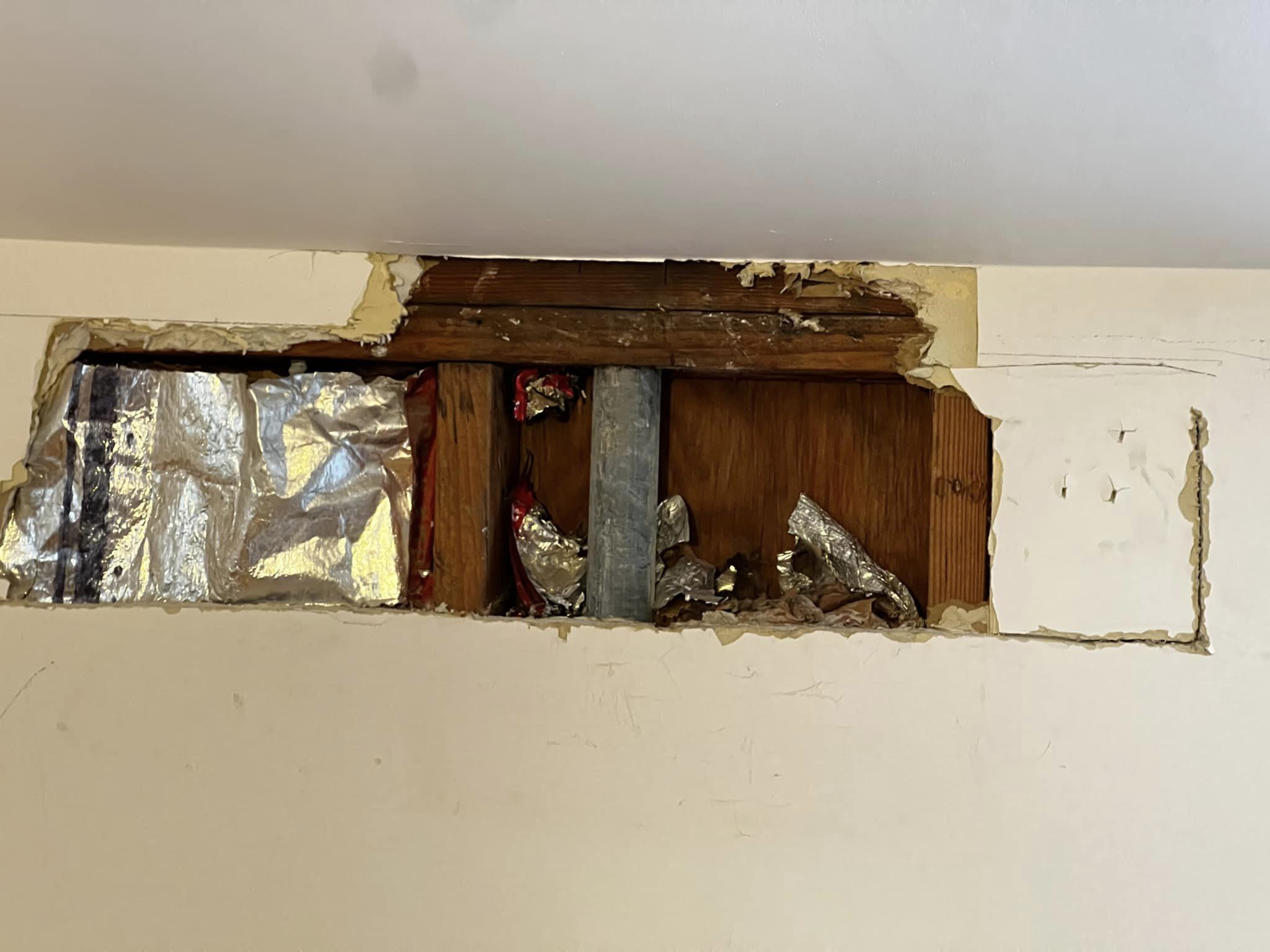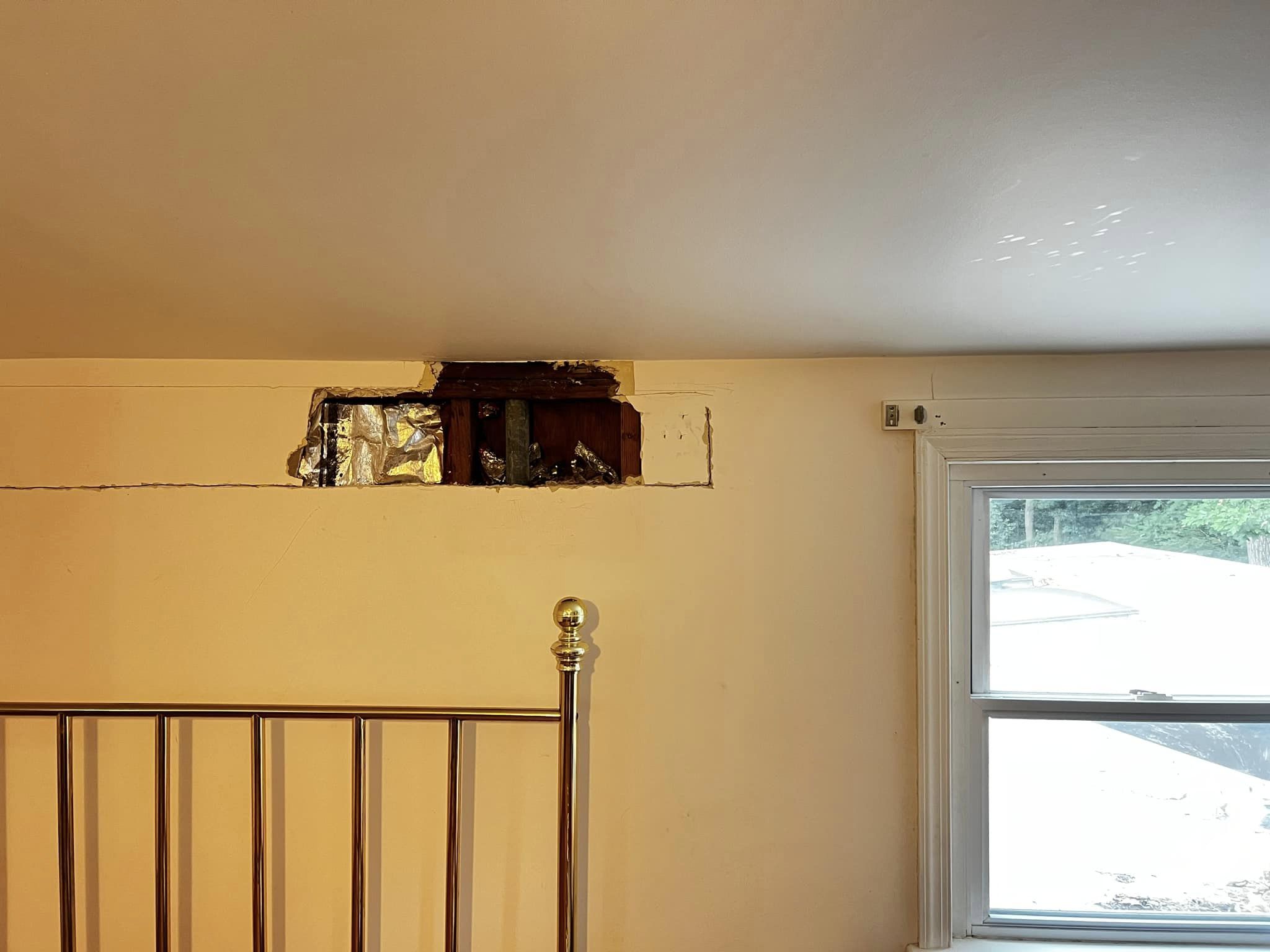Could condensation be the cause of the water damage in my 1950s house, potentially due to the temperature difference between the cold pipes and warm air?
Just picked up a 1950s house and as soon as I started peeling back some cracked paint, I discovered some water damage on the drywall underneath. I dug a bit deeper and found a plumbing vent pipe right behind the damaged area. I initially thought it might be a leak from the roof, but oddly enough, it has stayed dry during the last few rain showers.
One thing to note is that there isn’t an attic in this house, so the ceiling pretty much serves as the roof. It exits just a few inches above what you see inside. Could it be some kind of atmospheric phenomenon at play here? Maybe the contrast between a cold pipe and a warm house is causing condensation, or perhaps the humidity from a hot shower is meeting cold air on the second floor and causing issues.
Do you have any other ideas on what might be causing this?


If it were me, I’d begin by checking the boot around the vent first.
Maybe there’s a cold area in the winter causing condensation to form on the vent pipe when it’s extremely cold, which then leads to the cast iron sweating
This is just my two cents on what might be going on, especially considering how close it is to the house. Do you think adding insulation around the pipe could help?
Hey, , if I were you, I’d go for a wrap instead.
So, where exactly in the US are you located? Do you experience snow? Are there icicles during winter? Also, how much of an overhang do you have outside?
Hey there, I’m and I’m currently living in the suburbs of Washington DC. The humidity here in the summer is no joke. During the winter, it’s mostly mild with temperatures just below freezing at night and above freezing during the day.
It’s probably just condensation, but there’s a chance it could be a leak from strong winds. Some leaks only occur under specific circumstances, so it’s worth checking the pipe flange as well.
I dealt with a leaky joint on an aging metal vent pipe, especially during heavy rainfall. Consider switching out all visible metal vent pipes with PVC, if doable.
The pipe might have been frozen at some point, leading to the damage. If they recently replaced the roof, they may have simply covered it up. I suggest repairing the Sheetrock and keeping an eye on it. It should be okay.
Seems like it’s from previous damage. There used to be a roof leak there, but it was never repaired.
Yup, it’s definitely the vent pipe boot causing the issue. It deteriorates from sun exposure and other weather conditions. Just have a roofer swap it out. It’s easy and doesn’t cost much
For sure entering through the roof where the vent pipe goes through the boot
I assume they repaired the leak and did some cosmetic work inside to make it more appealing
Check out the roof to inspect the pipe boot for cracks or blockages. If you’re on a budget, you can purchase a cut-to-fit temporary boot for around 10 dollars. Just apply some tar afterwards